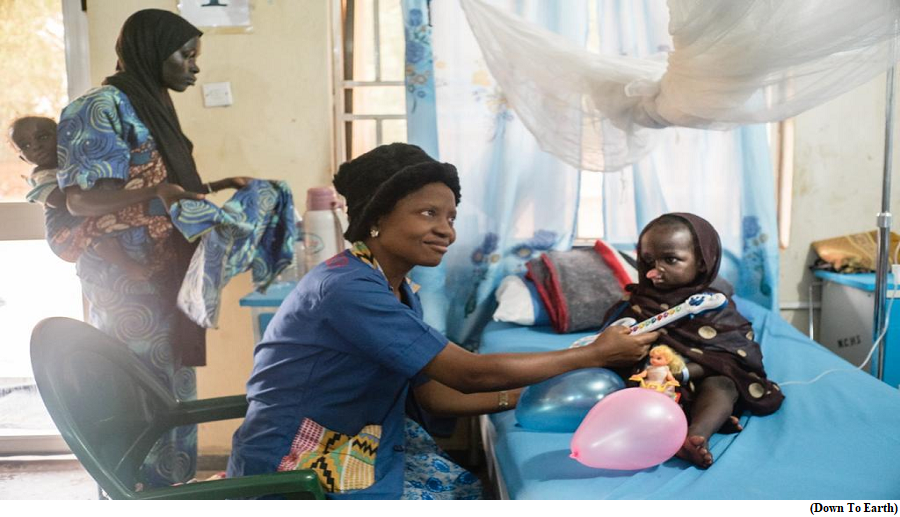PMLA accused can be given copy of grounds of detention within 24 hours, SC (GS Paper 2, Judiciary)

Why in news?
- The Supreme Court has clarified in a judgment that the Enforcement Directorate (ED) need not furnish a person accused under the Prevention of Money Laundering Act (PMLA) with a copy of the grounds of detention at the time of his arrest.
Details:
- The judgment comes amid debate that non-communication of the grounds of arrest was a violation of Article 22(1) of the Constitution, which upholds the fundamental right of any person who is in custody to be informed as to why he has been arrested.
- A Bench headed by Justice Bela M. Trivedi held that the written communication of the grounds of arrest need to be provided only within a “reasonable period” of the arrest, that is, within 24 hours of the arrest.
Key Highlights:
- It held that the recent judgment in Pankaj Bansal vs Union of India, which held that the ED must furnish the grounds of arrest in writing at the time of arrest, does not apply retrospectively.
- Therefore, the bench of Justices held that arrests that were made without furnishing grounds of arrest before October 3, 2023 cannot be illegal.
- The bench added that the accused needs to be furnished with the written grounds for arrest within 24 hours of arrest, but must be orally informed about them at the time of arrest.
- Section 19 of the Prevention of Money Laundering Act (PMLA) states that the accused must be informed of the grounds of arrest “as soon as may be”, which the bench said should be construed “as early as possible without avoidable delay” or “within reasonably convenient” or “reasonably requisite” period of time.
What’s next?
- The bench’s refusal to accept that Pankaj Bansal is retrospective is significant given that various high courts have taken different views on this issue.
- The Punjab and Haryana high court held it to be retrospective while the Bombay high court did not.
- The Supreme Court dismissed the appeal filed by Supertech chairman Ram Kishor Arora challenging the Delhi high court’s order affirming his arrest by the ED in a money laundering case.
India’s first winter Arctic expedition begins
(GS Paper 3, Science and Technology)
Why in news?
- The Raman Research Institute (RRI) is participating in the first winter Indian expedition to the Arctic region.
- Its researchers would examine the characterisation of the radio frequency environment in the Svalbard region of the Arctic in Norway.
- The survey will help astronomers assess the suitability of this uniquely located region for carrying out precision astronomy measurements.

Details:
- India has been running its own research station, Himadri, in Svalbard since 2008. The winter expedition is a bid to maintain a year-long presence at the station.
- A team of four scientists will embark on the journey to India’s research station in Alesund town on the Brogger peninsula, where research institutes from 10 countries have laboratories.
- Sensitive electronic instruments will be used to study the incoming radio signals in the frequency range of 5-500 megahertz (MHz) at the accessible sites in the vicinity of Himadri.
- The RRI team was selected as the first batch of scientists who will conduct experiments spanning astronomy, climate change and atmospheric science.
Nodal Agency:
- The month-long scientific expedition is being funded by the Earth Sciences Ministry.
- The National Centre for Polar and Ocean Research, Goa, is the nodal agency spearheading the expedition.
SARAS:
- The survey of the radio frequency environment had never been done before at the site and could potentially open avenues for deploying low-frequency radio telescopes in the region.
- For nearly a decade now, engineers and scientists at the RRI have been working on the development of the shaped antenna measurement of the background radio spectrum (SARAS) series of experiments.
- SARAS aims to study the faint cosmological signal from hydrogen, commonly referred to as the 21-cm signal, emerging from the cosmic dawn and the epoch of reionization.
Cosmic dawn:
- Cosmic dawn denotes the period when the first stars and galaxies were born in the universe.
- These are the two vital phases that the universe underwent during its early stages of evolution several billions of years ago.
- These periods in cosmic history are not well understood due to a lack of observations.
Noma, the latest addition to WHO’s list of neglected tropical diseases
(GS Paper 3, Environment)
Why in news?
- The World Health Organization (WHO) recently, added one of the world’s most under recognised health challenges, noma, to its official list of neglected tropical diseases (NTD).

About Noma:
- The name of the disease comes from the Greek word “nomē”, meaning “to devour”, as noma eats away facial tissue and bones if not treated early.
- Also known as cancrum oris or gangrenous stomatitis, it is a severe gangrenous disease of the mouth and face with a mortality rate of approximately 90 per cent.
- It is also associated with extreme poverty, malnutrition and poor access to sanitation and oral hygiene.
- Noma mainly affects children aged 2-6 years old and is found most commonly among those living in poor communities. There is an extreme lack of awareness regarding the disease.
Neglected nature:
- There are no reliable numbers of cases, the WHO website lists the ‘latest’ estimates 140,000 cases per year and a prevalence of 770,000 cases. However, the data dates back to 1998.
- The illness’s ‘hidden’ or neglected nature is most likely due to the fact that it affects the world’s most marginalised children.
Risk factors:
- Noma is associated with a number of risk factors, including poor oral hygiene, malnutrition, weakened immune systems, infections, and extreme poverty.




